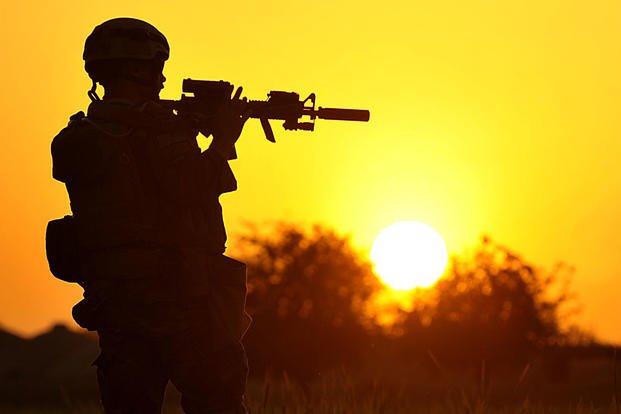Since the early years after Sept. 11, 2001, the United States has ramped up its battle against terrorists worldwide, and the special operations community has grown and changed to prepare our special operators better to do their mission.
The Marine Corps also has changed the way it does business on the special ops side of the house. With the development of U.S. Marine Corps Forces, Special Operations Command (MARSOC) in 2006, the Marine Corps joined forces with U.S. Special Operations Command (SOCOM) to perform a variety of special operations missions around the world, including foreign internal defense, special reconnaissance, direct action and other missions.
Here is the breakdown to clear up any confusion with the changes in Marine reconnaissance and the structure of MARSOC.
Battalion and Force RECON Are Still Operational Assets
Marine Recon Battalions and Force RECON still exist, and their missions largely are unchanged. But in a nutshell, all future Recon students must attend the basic reconnaissance course (BRC) at Camp Pendleton, California. You still can do this as a new Marine, but you first must qualify after boot camp and the School of Infantry (SOI).
The link above will describe the standards that a Recon applicant must adhere to before joining the 0321 military occupational specialty (Recon Marine). Recon battalions remain an element of the Marine divisions and continue performing missions for the deployed Marine commander. Force RECON remains under the control of the Marine Task Force commanders within the Marine Corps and the Fleet Marine Force (FMF).
In order to create today's existing MARSOC, the Marine Corps took both Force Recon companies and made them into the foundations for the Marine Special Operations Raider Battalions within the Special Operations Command (SOCOM).
Force RECON has recovered from that quick reduction and is fully operational today, and MARSOC has grown into a force of more than 2,700 members, with more than 1,000 operators. Here is today's breakdown of the community:
- Marine Raider Regiment (MRR) is the headquarters of the three Raider battalions -- each capable of a full spectrum of special operations missions around the globe. The MRR is comprised of the 1st Marine Raider Battalion, 2nd Marine Raider Battalion and 3rd Marine Raider Battalion. The battalions are broken into four companies, and the companies have four Marine Special Operations teams.
- Marine Raider Support Group is the headquarters of the three Raider Support Battalions -- 1st Marine Raider Support Battalion, 2nd Marine Raider Support Battalion and 3rd Marine Raider Support Battalion. Supporting the Raider battalions with logistics, communications, dog handlers, intelligence and fire control technicians is the mission of the Raider Support Group.
- Marine Special Operations School in Camp Lejeune, N.C., screens, trains, assesses and selects Marines to become MARSOC Raiders. The main component of the school is the Individual Training Course (ITC), which is nine months long and charged with the role of taking an experienced Marine of at least three years and making them Special Operations Marine Raiders.
Related video:
Here is a quote from a Marine lieutenant who is considering attending MARSOC:
"MARSOC likes for you to be [at least a noncommissioned officer] before you can try out, which means that you have to do about three years or two deployments before you can try out. The tryout consists of a pool portion to see if you know what you are doing in the water. Then, you take a [physical fitness test] and see between the two of those if you can go to the three-week screener [Assessment and Selection Phase 1]. They give you a packing list and do not tell you much more than that.
"Similar to the Army's SFAS and BUD/S indoc, which screens you prior to entering, the MARSOC training school is the goal of the screener. I think that it is more intimidating than anything else, as I hear that it is physical, but if you can run a 300 PFT, you will do well physically, but you still need to be able to learn new operations and tactics and be operationally proficient."
The MARSOC website states:
"MARSOC'S MISSION is to recruit, train, sustain and deploy scalable, expeditionary forces worldwide to accomplish special operations missions assigned by U.S. Special Operations Command [USSOCOM]. To accomplish that, MARSOC equips and trains Marines to succeed in austere conditions against a wide range of adversaries. MARSOC executes complex, distributed operations in uncertain environments, achieving silent success and strategic impact.
"MARSOC'S VISION is to be America's force of choice to provide small lethal expeditionary teams for global special operations. With tight-knit teams of agile and adaptable operators, MARSOC will continue to punch well above its weight class."
A forward-deployed Marine officer said it best when commenting about the MARSOC-trained Marine: "The product going into training is far more advanced. It is still growing, but you cannot argue with the results. They have done well while deployed to Africa doing FID [foreign internal defense] and equally well in Afghanistan doing DA/SR [direct action/special reconnaissance]."
Stew Smith is a former Navy SEAL and fitness author certified as a Strength and Conditioning Specialist (CSCS) with the National Strength and Conditioning Association. Visit his Fitness eBook store if you're looking to start a workout program to create a healthy lifestyle. Send your fitness questions to stew@stewsmith.com.
Want to Learn More About Military Life?
Whether you're thinking of joining the military, looking for fitness and basic training tips, or keeping up with military life and benefits, Military.com has you covered. Subscribe to Military.com to have military news, updates and resources delivered directly to your inbox.




















